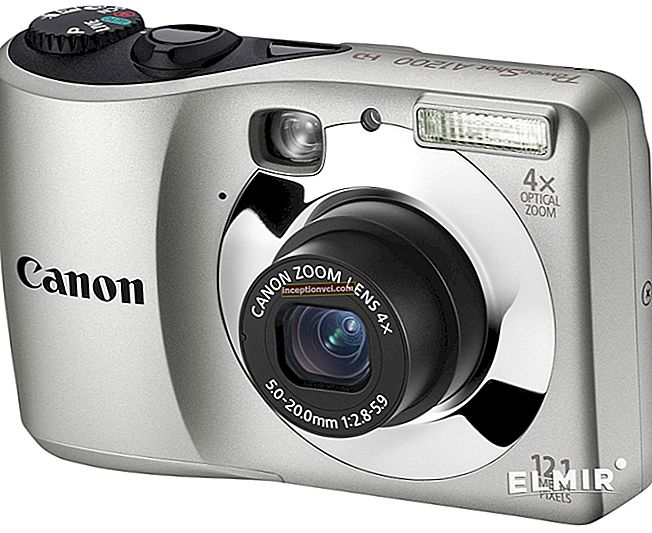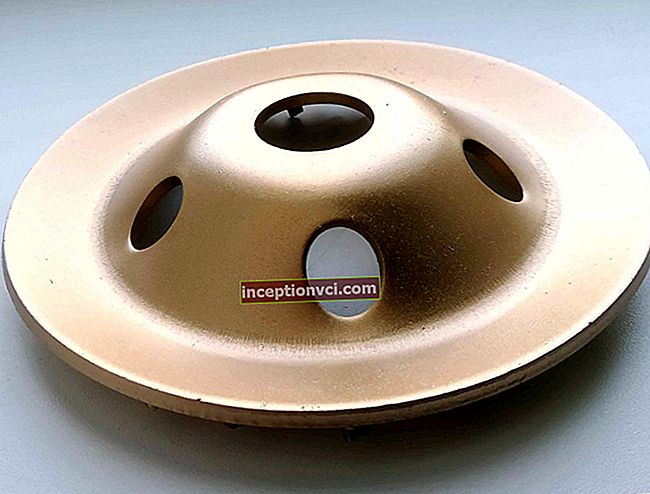Astrophysical studies of celestial bodies began in earnest in the 18th century, when Dutch opticians invented the "magnifying tube". The first to appreciate the role of this invention for astronomy was Professor Galileo Galilei of the University of Padua. With his own hand, he made three telescopes with a magnification from 3 to 30 times. By the way, the name "telescopes" was then given to magnifying tubes.

In the fall of 1609, Galileo began observations, later described in his famous astronomical work "The Star Messenger". The impression of the picture revealed to Galileo was extraordinary. "I am beside myself with amazement," he wrote, "since I have already managed to make sure that the Moon is a body similar to the Earth." On the surface of the moon, Galileo saw mountains and valleys. Venus turned out to be like a small moon, and the change in its phases proved the rotation of Venus around the sun. The planet Jupiter appeared to the astonished Galileo as a tiny disk around which small stars revolved - his satellites. Thus, Jupiter with the system of its moons turned out to be a reduced likeness of the solar system. At Saturn, Galileo noticed some strange appendages - traces of his famous ring. On the surface of the Sun, dark spots were clearly visible, which refuted the teachings of Aristotle about the "inviolable purity of heaven." The physical appearance of the familiar celestial bodies turned out to be unusual.

The first thing that catches the eye of anyone when observing the starry sky is the difference in the apparent brightness of the stars, or, more precisely, in their brilliance. The brightness of a star is understood as the illumination that a star creates on the surface of the Earth. The brighter the star appears, the greater the perceived flux of its radiation.
Even in ancient times, astronomers "sorted" the stars by their apparent brightness (apparent brightness). The brightest of the stars were called stars of the 1st magnitude, stars 2.5 (more precisely, 2.512) times fainter were called stars of the 2nd magnitude, etc. The least bright stars available to the naked eye are stars 6th magnitude. It is easy to calculate that 6th magnitude stars are exactly 100 times fainter than 1st magnitude stars.
The term "magnitude" characterizes, of course, not the size of stars, but only the flux of their radiation. The fainter the star, the greater its magnitude.
Later, for a more accurate characterization of stars, it was necessary to introduce fractional magnitudes, and for especially bright stars - zero and even negative magnitudes.
In the field of view of his telescope, Galileo saw many stars of the 7th and 8th magnitudes inaccessible to the naked eye. Some "nebulae.2" in the starry sky turned out to be composed of many stars. The Milky Way turned out to be a great cluster of faint stars.
Any telescope has a lens and an eyepiece. The lens collects rays from the light and creates an image of it in its focus. This image is viewed through a strong magnifying glass called an eyepiece.
In Galileo telescopes, the objective was a plano-convex converging lens, and the eyepiece was a scattering, plano-concave. In their optical design, they resembled theatrical binoculars.
Johannes Kepler in 1611 proposed a different scheme, in which both the objective and the eyepiece were biconvex lenses. This expanded the field of view, and therefore the Keplerian telescope system soon became dominant. The advantage of telescopes is twofold: they collect much more light than the human eye and increase the angle of view from which an object is observed.

The first telescopes were extremely imperfect. Their lenses distorted the image, i.e., in other words, created aberrations. The main ones are spherical and chromatic aberrations. The first is that the edges of the lenses refract light more than their central parts.For this reason, the rays from the lens converge at different points (focal points) and the image turns out to be indistinct, blurry. Chromatic aberration is expressed in a different way: beams of different colors are refracted by lenses differently - most violet, most weakly red. As a result, the images in the first telescopes were not only blurry, but also "rainbow" colored in different colors.
The longer the focal length of the lens (for the same diameter), the less aberration. Therefore, Galileo's followers built long-focus telescopes that were unusually bulky and difficult to control. This situation continued for almost a century and a half, and some lens telescopes of those times reached a length of 40 m. With the help of a complex system of blocks, they were fixed on high masts. And the eyepiece of the telescope was left on the ground. Sometimes they did without a tube (pipe) at all and used an "air" system - the lens was mounted on a high mast, and the eyepiece was held in hands.

Despite all these tricks, long-focus lens telescopes gave poor images, and the need for a radical restructuring of their optical system was imminent. By the middle of the 18th century. Single-lens telescopes have become obsolete, and a solution has been found in multi-lens objectives and eyepieces.
Imagine a complex lens made up of biconvex and plano-concave lenses. If we choose the curvature of the surfaces of the lenses and the type of their glasses, the aberrations of one lens will compensate for the “opposite” aberrations of the other, and the result is a lens that does not give distortion. Theoretically, this possibility was proved as early as 1695 by the English optician J. Gregory, and in 1733 C. Hall found types of glasses for a complex objective. His successor J. Dollond in 1758 began to manufacture "achromatic" lenses, which did not give rainbow images. Of course, there was no complete compensation in them, and opticians usually left a blue halo around the image, which did not interfere with observations.
Dollond came up with a 3-lens combination that gave even better results than the two-lens achromat. This is how "apochromats" appeared, which create images of excellent quality.
At the beginning of the XIX century. The German optician and astronomer J. Fraunhofer began to build apochromats, both in size and quality, superior to Dollond's telescopes. In 1839, his students Merz and Mahler made a magnificent 15-inch refractor (lens telescope) for the new Pulkovo Observatory, which for 8 years remained the largest in the world.
Eyepieces have also become more complex. Since the 18th century. they become double-lens and sometimes multi-lens.
The fight against aberrations in reflectors continued throughout the 19th century. The American optician Alvan Clark and his sons have achieved particular success in this matter. By order of the Russian government in 1885, Clark made a 30-inch refractor for the Pulkovo Observatory, which, unfortunately, was lost during the Great Patriotic War. The absolute record in the competition of refractors was achieved in 1897. At the expense of the millionaire Yerkes, Alvan Clark and Sons built a gigantic instrument - a refractor with a 102 cm (40 inches) objective lens. The 40-inch refractor of the Yerkes Observatory is still the greatest refractor in the world. No one dares to build even larger lens objectives - the difficulties of their creation are colossal, and the efficiency is low: the absorption of thicker lenses negates the benefit of a larger aperture. In addition, the enormous weight of the lenses causes them to bend, which spoils the image. In the championship of telescopes, reflectors took the lead.
The idea of a mirror telescope, or reflector, was first proposed during Galileo's lifetime by N. Tsuki (1616) and M. Mersen (1638). Somewhat later, similar schemes of reflectors were theoretically developed by D. Gregory (1663) and Cassegrain (1672). In 1664, R. Hooke even made a reflector according to Gregory's scheme, but its quality was so low that observations with it were not carried out.
Only in 1668The famous Isaac Newton built the first working reflector. It was a very miniature optical instrument, a bronze concave spherical mirror which had a diameter of only 2.5 cm, and its focal length was 6.5 cm. The rays from the main mirror were reflected by a small flat mirror into the side eyepiece. Three years later, Newton made a slightly larger reflector with a mirror diameter of 3.4 cm at a focal length of 16 cm. Thus, the objective in the reflector is not a lens, but a mirror.
In the Gregory system, the main mirror had a hole in the center, where the rays reflected from the concave ellipsoidal mirror were directed. If we replace this ellipsoidal mirror with a hyperbolic one, we obtain the Cassegrain system.
Reflectors compare favorably with refractors in that they do not have chromatic aberration. If the main mirror is given a parabolic shape, it will collect all the rays in one focus, and thus the spherical aberration will be eliminated. It is easier to make a mirror than a lens - you only have to grind one surface. These and other advantages have ensured the rapid progress of reflectors.
In the middle of the 18th century. English optician D. Short organized a factory production of high-quality reflectors, the largest of which had a mirror diameter of 55 cm. He built numerous and sometimes very large reflectors in the 18th century. the famous founder of stellar astronomy, William Herschel, who worked most of his life in England. The largest of its reflectors had a metal mirror with a diameter of 122 cm. It weighed about 10,000 N and sagged noticeably under its own weight, which caused the images to deteriorate. The system of blocks and ropes, with the help of which the tool was set in motion, made it difficult to work. Nevertheless, William Herschel managed to make many discoveries with him.

An even larger reflector with a metal mirror 2 m in diameter was built in 1845 by the Irish aristocrat William Parsons, who bore the title of Lord Ross. His "leviathan", as his contemporaries called the reflector of Lord Ross, remained the largest until the first quarter of this century.
In 1917, a new 100-inch reflector with a main glass mirror 258 cm in diameter and a lattice tube was installed at the Mount Wilson Observatory (USA). For a long time it remained the largest telescope in the world, until, finally, after the Second World War, it was surpassed by the five-meter reflector of the Mount Palomar Observatory. Curiously, this was the first telescope in which the observer's cabin was placed inside a tube.
The desire to minimize all kinds of aberrations led in the XX century. to the creation of combined telescopes, which use both mirrors and lenses. The first optical instrument of this type was created in 1930 by a German optician, Estonian by origin, B. Schmidt. In his telescope, the main reflective mirror has a spherical surface, but the corrective thin lens that corrects aberration, placed in the center of the curvature of the main mirror, has a very complex shape. The main advantage of the Schmidt telescopes is a huge field of view (up to 25 degrees).
In 1941, the famous Soviet optician D. D. Maksutov invented a new type of mirror-lens telescope, in which, instead of a complex corrective lens, he used a spherical meniscus - a weak diffusing convex-concave lens that compensates for the spherical aberration of the main mirror. Since the surfaces of the mirror and meniscus in the telescopes of the Maksutov system are spherical, it is much easier to make such instruments than Schmidt telescopes. This and other advantages explains the widespread use of Maksutov telescopes in astronomical practice.
At present, the largest telescope in the world is the six-meter reflector of the Special Astrophysical Observatory of the Academy of Sciences.
The six-meter telescope tower is 53 m high and 44 m in diameter.the weight of the aluminum dome reaches 10,000 kN. The total weight of the reflector together with the installation is 8500 kN, the focal length is 24 m. With all these astronomical dimensions, special devices provide the most accurate movements of the telescope in height and azimuth. Aiming the telescope at the object is carried out using electronic computing devices placed in a special control panel. Amazingly, the error in automatic targeting of an object does not exceed a fraction of an arc second. Inside the telescope, at the height of a 15-storey building, an observer's cabin is fixed.

The largest telescope in the world has access to stars of the 24th magnitude, that is, they are millions of times fainter than those that Galileo examined through his telescopes.
Although there are projects for 10m reflectors, there is still a long way to go. The theoretical limit, apparently, can be considered a 25-meter reflector. However, the difficulties in manufacturing super giant telescopes are so great that projects of multi-mirror reflectors look more realistic, where instead of one gigantic lens-mirror, many much smaller mirrors are used, converging the rays from the luminary in one common focus.









